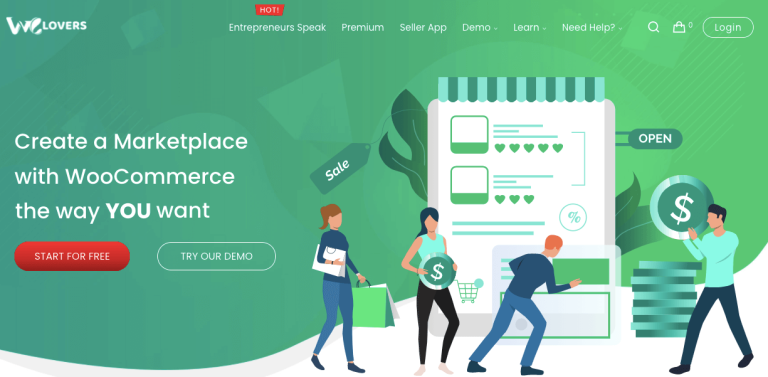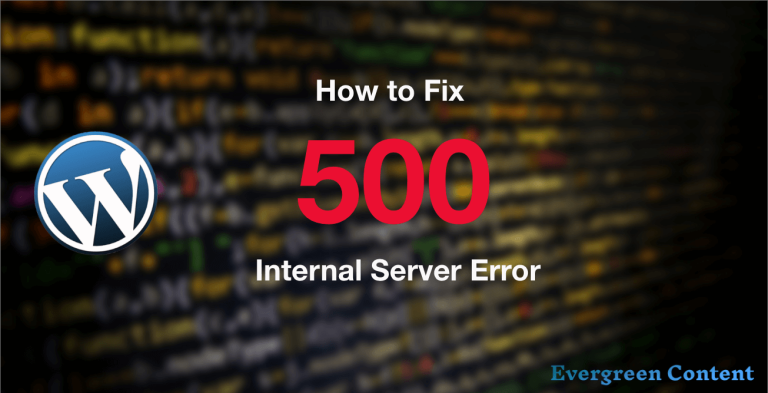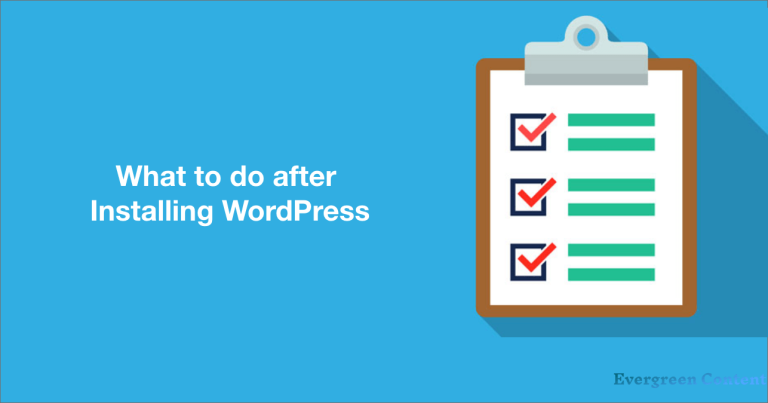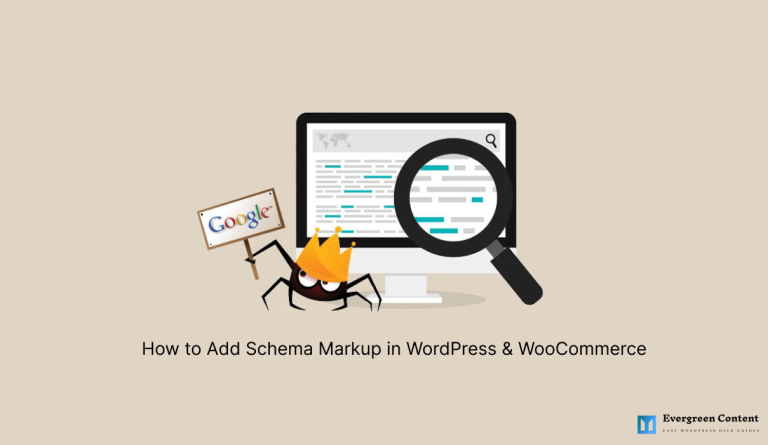Online Marketplace Trends: The Changes You Should Know in 2024
What do you need to make your online marketplace thrive?
Apart from your time and effort, you need to be innovative, make some smart investments, know the current online marketplace trends and the best SEO practices, and apply those to your marketplace.
Knowing the marketplace trends is particularly important in the 21st century as it will help you stay ahead of the competition.
In this article, we are going to discuss some of the top online marketplace trends that you should follow. Also, the marketplace evolution, its current status, and the future as a bonus.
The current trends in the eCommerce industry are mostly associated with modern technologies and their adaptations. The 9 top online marketplace trends you should follow in 2024 to make your business thrive are:
- Niche-Specific Marketplace
- Integration of B2B and B2C
- The dominance of Mobile Commerce
- Wide Adaptation of Artificial Intelligence
- Inclusion of Augmented and Virtual Reality
- Mature Social Media Commerce
- Focus on Omnichannel Selling
- Influence of Sustainable Practices
- Versatility in Payment (Cryptocurrencies)
Now, we will talk about each of the eCommerce trends in detail with the necessary data and evidence. So, stay with us till the end.
1. Niche-Specific Marketplace
Several eCommerce businesses are being launched every day across the globe due to the excellent business prospect in this industry. But only a few of them survive in the long run.
About 90% of eCommerce businesses fail after 120 days of their launch!
MarketingSignals
The main reason behind this failure is a lack of innovation. These marketplaces failed to draw customers’ attention as they were not designed for a specific target group.
If you look at the successful marketplaces in recent times, like OpenSea and Satair, you will see they are targeted for a specific niche. So, if you want to become successful, you shall build a niche-specific marketplace.
2. Integration of B2B and B2C
Many people prefer to buy their desired goods both wholesale and retail from the same site. Several online marketplaces, including Alibaba and eBay, are already providing this facility following the growing demand.
About 46% of B2B buyers prefer to buy directly from the suppliers. And, direct-to-consumer (DTC) eCommerce sales in the United States grew by 45% in 2021
McKinsey & Company, eMarketer
You might have realized that the integration of B2B and B2C is one of the new online marketplace trends. We will highly recommend you follow this trend to increase your sales.
3. Dominance of Mobile Commerce
Mobile devices are currently dominating the entire eCommerce industry. The reason is simple – more than 92% of internet users access the internet via mobile devices.
Nearly 73% of the total eCommerce sales were done via mobile devices across the globe in 2021
Statista
The dominance of mobile commerce will go further in the future. So, you should give priority to mobile phones first while making an eCommerce website in 2024.
You will also have to make the mobile customer experience top-notch and build an attractive and responsive mobile site and downloadable app.
4. Wide Adaptation of Artificial Intelligence
Artificial intelligence (AI), which was a sci-fi term a few years ago, is now everywhere – from your watch to robot cleaner. Since eCommerce is a crucial and huge sector, AI is being implemented here like crazy.
About 92% of eCommerce operators are either actively working on or planning to integrate AI into their platforms.
Statista
The benefits you can get from AI are – enhancing user experience, improving personalization, automation, site performance, and design, and lowering marketing and overall site maintenance cost.
AI is not only a trend in the eCommerce industry but also in the entire tech world. So, it is high time you start adopting it now.
5. Inclusion of Augmented and Virtual Reality
The main reason many people still don’t prefer online shopping is the fact that they can’t touch, smell or try out the products before purchasing. Augmented and virtual reality (AR and VR) can change the game in these cases.
With the help of AR and VR, you can try products before buying – from a pair of shoes to your bedroom furniture. These modern technologies will give the feel that you are shopping at a physical store.
IKEA was the pioneer in implementing these technologies, allowing customers to virtually fit different furniture in their spaces. Other companies have realized the potential and now applying these techs to their marketplaces.
6. Mature Social Media Commerce
People have been selling products on social media, particularly on Facebook, since its beginning. In 2016, Facebook launched Marketplace to make everything organized, and the situation started to change gradually.
The market size of social media commerce is huge and it is growing fast. To grab this market, social media marketers nowadays sell their products more organized manner like the online marketplaces.
The global social commerce market was $501 billion in 2021, which is expected to cross $792 billion in 2025!
Research and Markets
In simple words, social media commerce is getting mature day by day and it’s one of the top trends in the online marketplace industry which you need to follow in 2024.
7. Focus on Omnichannel Selling
Omnichannel commerce is a multichannel approach that focuses on seamless customer experience and allows customers to buy products and services whether they are shopping online from a mobile device, on a social channel, or in a brick-and-mortar store.
The adaptation of omnichannel selling is rising across the eCommerce industry because of its excellent outcomes. Besides, it is a big matter of ease and convenience.
The application of omnichannel strategies helps businesses retain on average 89% of their customers.
Softtek
We are now living in the era of the digital revolution when you can get almost anything you need within just a few fingertips. You should be versatile to sustain your business in this era, and the adaptation of omnichannel commerce is the way to do so.
8. Influence of Sustainable Practices
The planet earth has been going through a crisis situation for the last few decades due to climate change. As a result, consumers and businesses alike are now more aware of the environment and sustainability – also in terms of shopping.
One recent survey found that 50% of respondents wanted more sustainability in the fashion industry, and 75% wanted to see less packaging.
That’s why, many businesses are now finding ways to be more eco-friendly by going paperless when possible, using biodegradable packaging, and using recyclable supplies. This is one of the crucial eCommerce trends that you should follow from moral responsibility.
9. Versatility in Payment (Cryptocurrencies)
We are experiencing versatility in payments in 2024 – from card to cryptocurrency payment. The era of offering customers one or two payment options seems gone now.
Top eCommerce businesses are trying to offer their customers as many payment options as possible so that they can make purchases easily and quickly.
The must-have payment methods are-
- card
- online payment (like PayPal)
- digital wallet (like Google Pay)
- bank transfer
- and cash on delivery
You will also have to consider incorporating cryptocurrencies as a payment method as it’s one of the new online marketplace trends. Top eCommerce companies, including eBay and Expedia, are already accepting cryptocurrency payments.
Bonus Part One: Online Marketplace Evolution

Did you know the concept of online selling was born in 1979, much before the invention of the world wide web in 1989?
But the first true implication of eCommerce took place several years later in the 1990s, thanks to Book Stacks Unlimited and Pizza Hut for introducing online ordering systems in 1992 and 1994 respectively.
Online marketplaces started to evolve afterward and an industry was built upon them in the following years. The eCommerce industry experienced a significant evolution in the 2000s. It has become mature day by day and gained immense popularity following the Covid-19 pandemic.
Timeline of Online Marketplace Evolution: 1991 to 2024
Now, we are going to let you know some striking events in the eCommerce industry in the following timeline – from Michael Aldrich’s invention of electronic shopping to the current growth. These events defined the online marketplace evolution.
- 1979: British entrepreneur Michael Aldrich invented online shopping
- 1992: Book Stacks Unlimited launched as the first online marketplace
- 1994: Marketplace leader Amazon founded; Pizza Hut introduced online ordering
- 1996: Global online sales surpassed $1 billion/year for the first time
- 1998: PayPal launched as the first true online payment system
- 2000: Google introduced AdWords as an online advertising tool
- 2003: Apple launched iTunes, the first major eCommerce for digital products
- 2005: Etsy was founded, and the first Cyber Monday sales campaign introduced
- 2008: The era of mobile commerce has begun with the first mobile purchase
- 2011: Stripe and Google Wallet introduced as new e-payment methods
- 2016: Facebook launched Marketplace, revolutionizing social eCommerce
- 2020: Covid-19 influenced eCommerce growth (both positively and negatively)
- 2021: Global eCommerce market reached a value of $13 Trillion
- 2022-2027: The E-commerce penetration rate was 19% in 2022. It’s now expected to reach 25% by 2027.
Currently, online marketplace leaders are giving emphasis to enhancing the user experience through introducing various modern technology, like AI, AR, omnichannel, and video shopping.
Bonus Part Two: Current Status of Online Marketplace
The world’s top 3 private companies (Walmart, Amazon, and Apple) are based on or associated with eCommerce businesses! This simple sentence is enough to describe the current status of the online marketplace.
We, however, will show you some astounding statistics below which will give you a clear picture –
- Global eCommerce market value reached $13 trillion in 2021
- Global retail eCommerce sales hit $4.9 trillion in 2021
- Over 27.6% of people worldwide shop online as of 2021
Sources: IMARC, eMarketer, Statista
You may read this article “What is a Marketplace” if you want to know more about an online marketplace – the definition, types, and examples.
Bonus Part Three: The Future of Online Marketplace
The invention of the internet has made the unthinkable happen. Now, we can shop from anywhere anytime with the help of online marketplaces or stores. And, online marketplaces have given the convenience and created a big source of income.
You might already have some idea of how far online marketplaces can go. Now, let’s check out some statistics to have a clear picture:
- The global eCommerce market is expected to reach $55.6 Trillion by 2027
- Global online marketplace sales are expected to hit $8.8 trillion by 2025
- The online marketplace industry will keep growing at a CAGR of 27.4% till 2027
Sources: IMARC, Be STF
It’s not only a matter of growth; online marketplaces will experience numerous integrations of modern technologies and innovations. Who knows? One day you might not need to shop at physical marketplaces.
With the help of AI and VR, now you can see how you look with the dress or the pair of shoes you want to buy without wearing them! And such technology will improve a lot in the future.
FAQ on Online Marketplace Trends
What is an online marketplace?
An online marketplace is an internet-based platform (website or application), where multiple parties (companies/shops/individuals) trade their goods and services online.
What are the examples of the online marketplace?
Examples of online marketplaces are Amazon, eBay, AliExpress, Uber, Etsy, App Store, Steam, Spotify, Netflix, Airbnb, UpWork, Global Sources, Coursera, etc.
Which are the leading online marketplaces?
The leading online marketplaces are Amazon, Alibaba, eBay, Walmart, Rakuten, and Etsy.
What is the difference between eCommerce and online marketplace?
The main difference between eCommerce and an online marketplace is – an online marketplace is a form of eCommerce where multiple parties are involved.
What sells most in the world?
The most sold products in the world are clothing and fashion, electronics, and food items.
Final Thoughts: Keep Your Marketplace Updated with the Trends
If you ask business experts what is the most profitable business at present, most of them will answer “online marketplace”. Because you can earn tons of money in this sector which has excellent business prospects.
However, it doesn’t mean you will be able to earn lots of money by just opening an online marketplace. You will have to be innovative, know the current online marketplace trends, and adopt those trends as soon as possible.
We believe this article has helped you learn all the trends in the eCommerce industry that are crucial for 2024. Now, we hope that you would keep your marketplace updated by adopting these trends.
Please feel free to let us know in the comment section if you have any queries regarding this topic.







